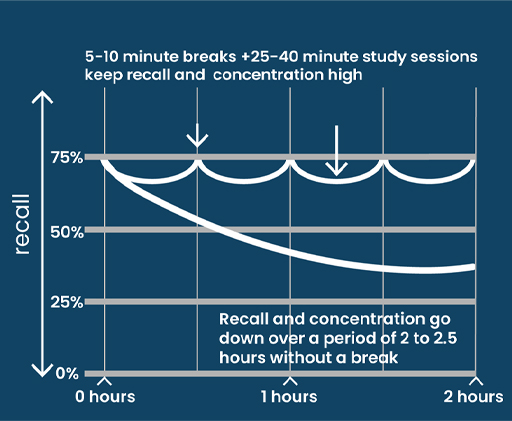4.1 Chunking time
This study technique keeps recall and concentration high, as you can see in Figure 5. Working for a lengthy period with no break will tend to cause recall and concentration to drop dramatically.
Here are some steps for avoiding this drop-off and maintaining recall and concentration.
Step 1
Before commencing any study, set a time window – for instance, two to three hours – and decide how much you would like to cover in this time period. Research suggests that the human brain has a very strong tendency to complete things when it knows the boundaries (Zull, 2011).
Step 2
Set a timer for somewhere around 25 to 40 minutes. When the timer goes off, stop and take a break. Set a 5-10 minute timer for your break, and go and do something different. No longer than 5-10 mins though!
Step 3
When you return to your study, quickly look back over what you’ve just read. This helps to embed the memory and reinforces what you’ve learned so far. Have a quick look over what you are about to study and then start another timer for 25 to 40 minutes.
Step 4
Have another 5-10 minute break, and when you come back, skim over the last two study sessions that you have completed. Repeat this process, and try to complete the time window that you decided on at the beginning.

